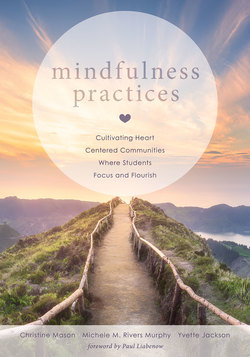Читать книгу Mindfulness Practices - Christine Mason - Страница 11
На сайте Литреса книга снята с продажи.
ОглавлениеPART I
THE URGENCY OF NOW
In part I, we build on the first of three streams of research that guide our work toward creating mindful, compassionate communities: pediatric neurobiology research on the impact of toxic stress and trauma (Ford & Courtois, 2009; Zelazo & Cunningham, 2007) on brain development. This research suggests that toxic stress and trauma are particularly damaging for preschool and elementary-age children during their early developmental years, and those early years are an important time for helping children recover from trauma due to the brain’s neuroplasticity.
Chapters 1 (page 13), 2 (page 21), and 3 (page 37) provide context for the reader regarding the importance of changing the conversation and narrative of how we educate and the importance of beginning now. These three chapters provide the urgency for implementing mindfulness as the foundational practice for cultivating caring, compassionate school communities as a direct response to combat the escalating prevalence of trauma and toxic stress in our students’ lives and in those who teach and lead. As we begin the journey toward healing, we also provide foundational information on developmental trauma and neuroscience, and information regarding the underlying structure of the brain that teachers must consider in developing classroom-based interventions, introducing mindfulness, and building caring, compassionate school communities. Note that chapter 3 contains overarching sections that explain the connection between our brains, our emotions, trauma, and stress.
We believe that by engaging in schoolwide mindfulness activities and creating caring, compassionate school communities, educators have a vehicle for strengthening executive functioning (EF), accelerating personalized learning, advancing student interest and strengths, and helping students heal from trauma.
